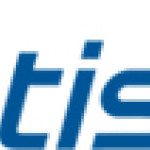- Industri: Telecommunications
- Number of terms: 29235
- Number of blossaries: 0
- Company Profile:
ATIS is the leading technical planning and standards development organization committed to the rapid development of global, market-driven standards for the information, entertainment and communications industry.
In layered systems, entities in the same layer but in different systems (nodes) that must exchange information to achieve a common objective.
Industry:Telecommunications
In layered systems, a set of data that is sent by a user of the services of a given layer, and is transmitted to a peer service user semantically unchanged.
Industry:Telecommunications
In layered systems, a service data unit that is delivered to a peer entity in the destination open system before the delivery of any subsequent service data unit sent on that connection.
Industry:Telecommunications
In laser diodes, a phenomenon in which a high field intensity of stimulated optical radiation causes degradation of the facets, i.e., those forming the cavity mirrors, decreasing reflectivity and resulting in a decrease of the internal quantum efficiency and an increase in the threshold current.
Industry:Telecommunications
In isochronous transmission, the longest interval of which the theoretical durations of the significant intervals of a signal are all whole multiples.
Industry:Telecommunications
In ISDN, the 16-kb/s segment of a 144-kb/s, full-duplex subscriber service channel that is subdivided into 2B+D channels, i.e., into two 64-kb/s clear channels and one 16-kb/s channel for the ISDN basic rate. Note 1: The D channel is usually used for out-of-band signaling. The two 64-kb/s clear channels are used for subscriber voice and data services. Note 2: The D-channel specifications are addressed in the CCITT (now, the ITU-T) Recommendation for the Integrated Services Digital Network (ISDN. ) Note 3: The D-channel may be 64 kb/s for the primary rate ISDN service.
Industry:Telecommunications
In ISDN, a protocol event (a protocol error or other event) that indicates that a potential trouble condition exists on the ISDN interface. Note: Examples of events that are not protocol errors that may indicate potential trouble conditions are (a) the transmission of a DM (disconnect mode) in response to a SABME (set asynchronous balanced mode extended) command, and (b) transmission of a STATUS message.
Industry:Telecommunications
In ISDN, a logical point between two, nonoverlapping functional groups. Note: When equipment is placed at a reference point, that reference point is designated an interface.
Industry:Telecommunications
In ISDN, a combination and arrangement of functional groups and reference points that reflect possible network topology.
Industry:Telecommunications
In ISDN technology, a connection (using either the B-Channel or a logical link on the D-Channel) established between the user equipment and a packet-mode handier function, over which packet-mode calls (incoming and outgoing) are established.
Industry:Telecommunications
